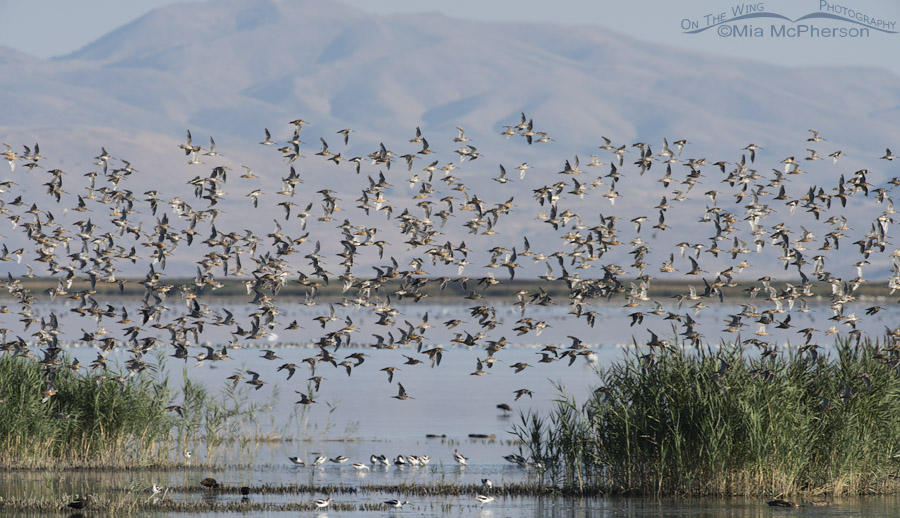 Flock of Long-billed Dowitchers in flight
Flock of Long-billed Dowitchers in flight
I’m writing this post early in the morning, it is still dark outside, spring is supposed to have sprung and there is at least an inch of snow on the ground that fell overnight. That was after it rained all day yesterday. We already have had 200% snow pack this year and it was a very wet March and April might just be trying surpass the amount of rain we got in March.
There is flooding in northern Utah and I feel for those who are affected. It might not get better for a while.
Bear River Migratory Bird Refuge auto tour route is still closed and many of the birders, bird photographers and nature lovers are itching to know what birds are there because after all spring migration is an exciting time at the refuge.
Thousands of shorebirds stop and refuel at the refuge before heading further north to their breeding grounds like these Long-billed Dowitchers. Some are only there for a few days and we won’t see them again until fall.
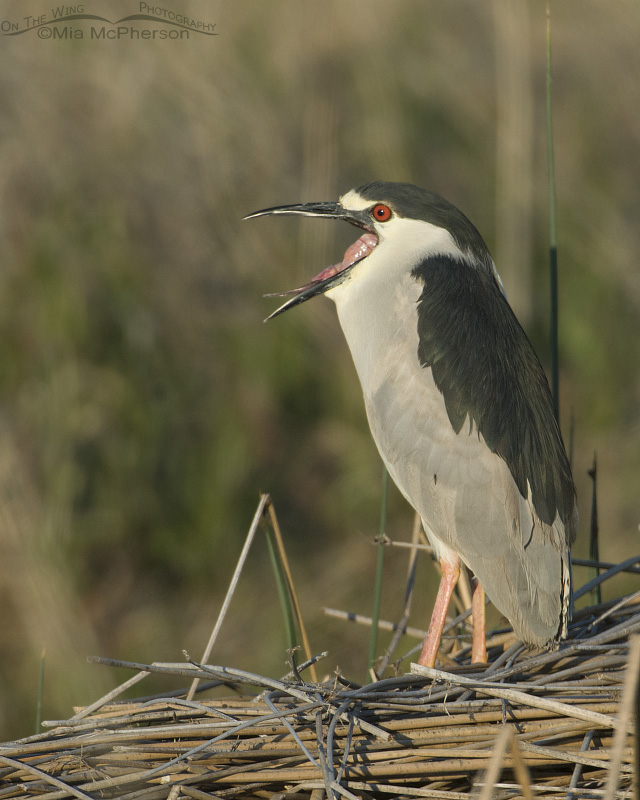 Yawning Black-crowned Night Heron
Yawning Black-crowned Night Heron
Some of the wading birds stay the whole winter at the refuge including Black-crowned Night Herons and Great Blue Herons but we have Snowy Egrets, White-faced Ibis, Cattle Egrets, Great Egrets, American Bitterns that come after the ice melts from the marshes. Once in blue moon we also get rare vagrant wading birds in the spring too like Little Blue Herons or Tricolored Herons.
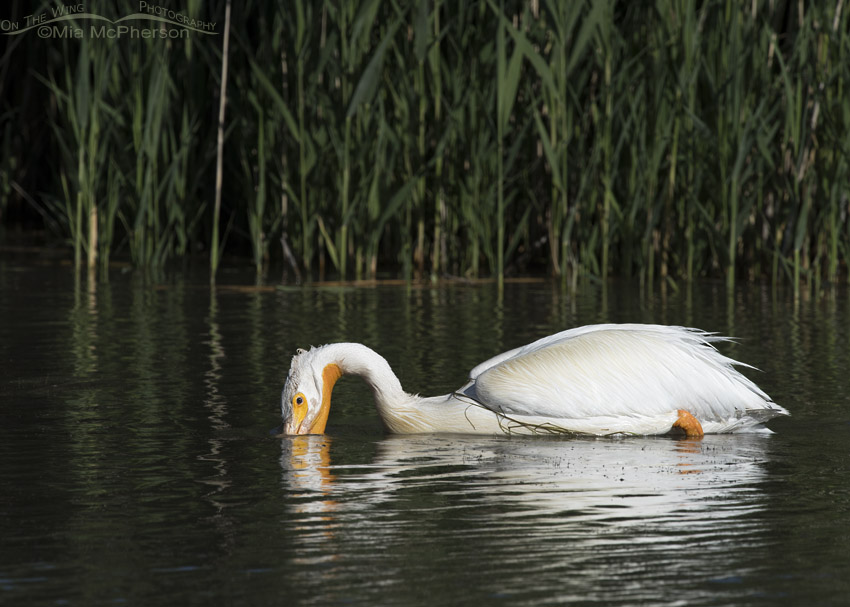 Single feeding American White Pelican at Bear River
Single feeding American White Pelican at Bear River
Our American White Pelicans arrived some time ago but I love seeing them in huge flocks feeding on the water at the refuge. I just know they are already doing that.
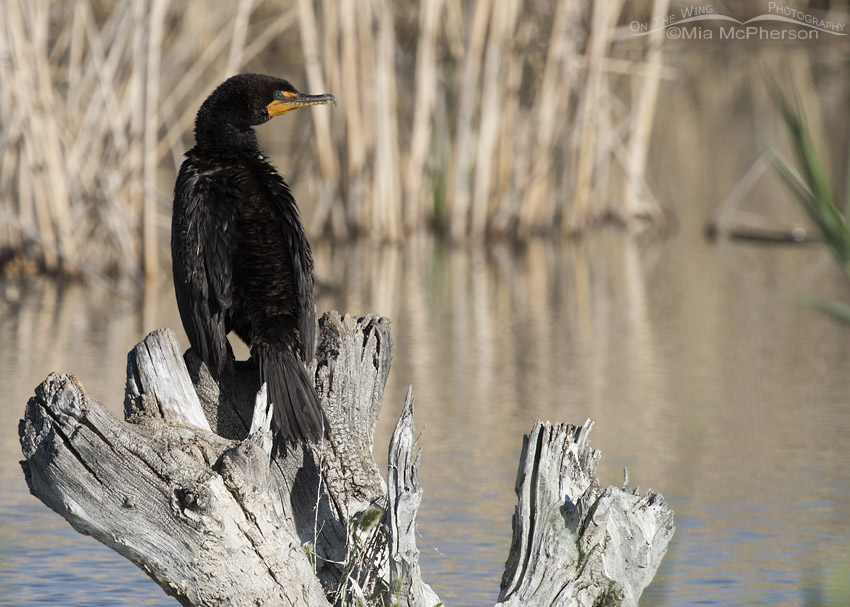 Double-crested Cormorant on a stump in the marsh
Double-crested Cormorant on a stump in the marsh
The Double-crested Cormorants arrived too and are probably feeding close to the pelicans where they will snatch fish from them given even a half a chance. And I am sure they are spreading their wings and warming up in the sun, when the sun shines that is. It has been pretty gray here.
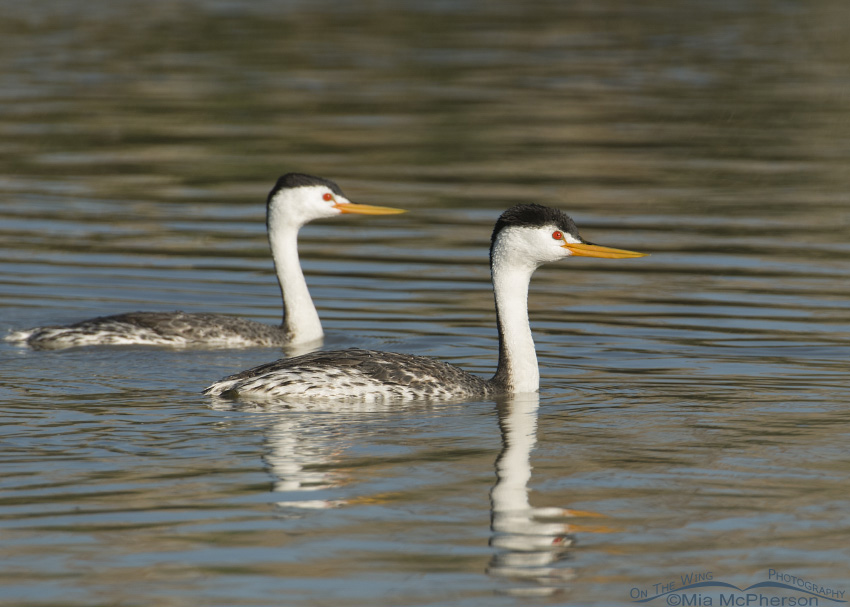 Pair of Clark’s Grebes
Pair of Clark’s Grebes
The Clark’s and Western Grebes had returned my last trip to the refuge on one of the few days it was open in mid March. I know they are courting, rushing and dancing on the water but we just can’t get there to see and be amazed by their courtship rituals. I’ve seen Eared Grebes on the Great Salt Lake by the thousands already so they might be visible from the auto tour route too.
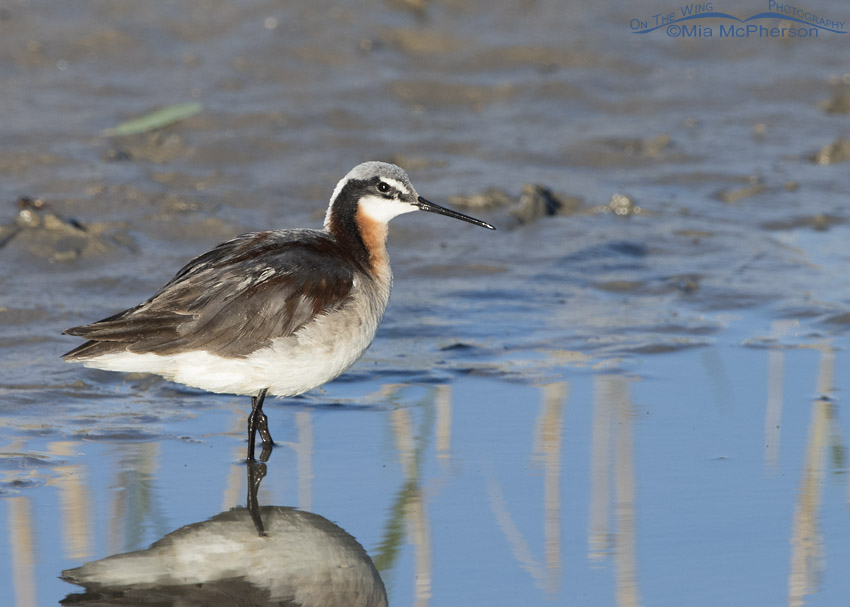 Wilson’s Phalarope in the marshes at Bear River
Wilson’s Phalarope in the marshes at Bear River
The first Wilson’s Phalaropes should be arriving soon too. Marbled Godwits and Willets will add to the enormous flocks of shorebirds we get in spring. And Least Sandpipers, Snowy Plovers… too many to list.
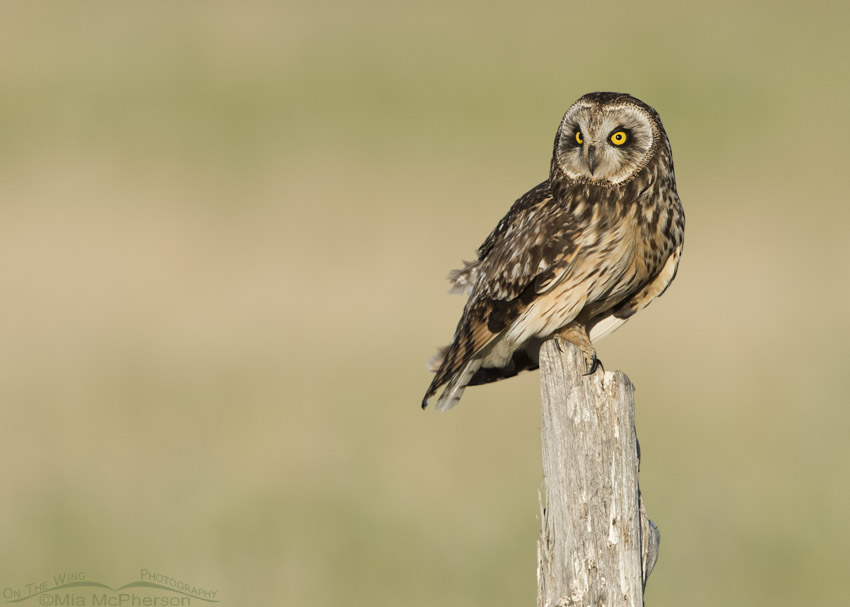 Female Short-eared Owl on the way to the auto tour route
Female Short-eared Owl on the way to the auto tour route
The Northern Harrier males have already begun to sky dance by performing their fantastic mating displays over the marshes where the harriers will build their nests. And the Short-eared Owl males will be sky dancing to attract the females.
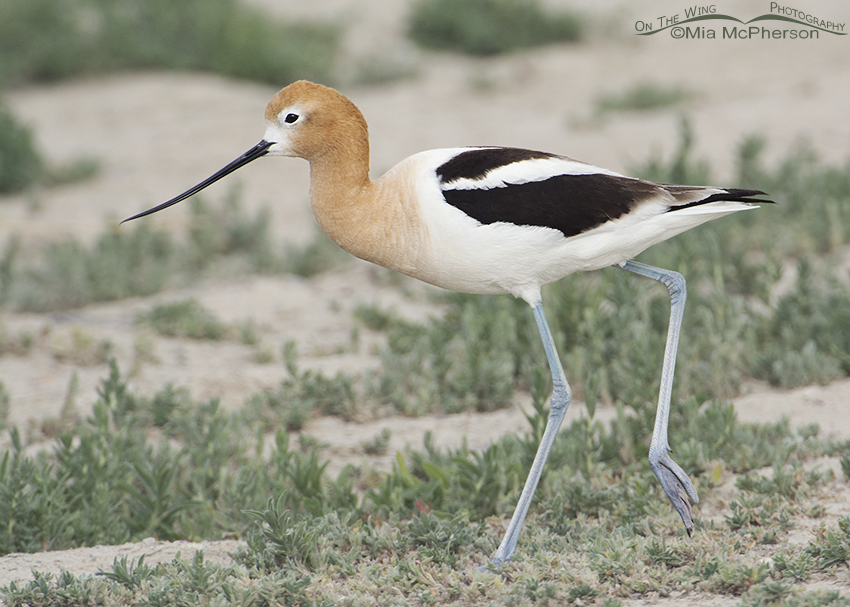 Springtime American Avocet
Springtime American Avocet
The swans have most likely headed to the far north but the ducks and geese that live and breed on the refuge have already built their nests or are building them now. The Marsh Wrens, Yellow-headed Blackbirds, Red-winged Blackbirds, Soras and Virginia Rails are probably already calling in search of their mates.
I know I feel like I am missing all of the birds at the refuge and that I am not alone. It is almost as if the birds are the pulse of the refuge at this time of the year. We don’t know when we will be able to get back out to the auto tour loop but I know that doesn’t stop me from wondering what birds are there, how many of them there are and how they are doing.
This flooding may go on for quite some time yet, there is plenty of snow still in the mountains and spring run off won’t end for a while. I am sure the birds do not miss us but I know we sure miss them.
Life is good.
Mia
Click here to see more of my bird photos in their galleries.


I hope you get there soon. I really hope it.
I am missing all of the wetlands, BRMBR is not the only one closed. This is my spring break and I usually spend as much time as possible at many of the Great Salt Lake wetlands. The positive side is the lake has risen 2 feet. Imagine the amount of water it takes to bring the vast area of the Great Salt Lake up 2 feet. I am headed off to other places less explored this next week including Fish Springs. The west desert is calling me.
What a fantastic set of photos, my goodness I didn’t know there were that many Dowitchers in the world, LOL. I havn’t seen one never mind that many!!!. And the grebes are outstanding, they are new to me.
Excelent, All the best Gordon.
I’m very much missing the birds and the loop. The night herons are a favorite of mine, well all herons are a favorite of mine. I was really hoping to catch a few of the more rare ones this spring. Let’s just hope that any water damage to roads and bridges is minimal. Thanks for the photos.
A visual feast!!! Thank you ….these are wonderful…one of my favorites is the last one. The Avocet…such a graceful, beautiful bird….I hope you get back to your shooting grounds soon…